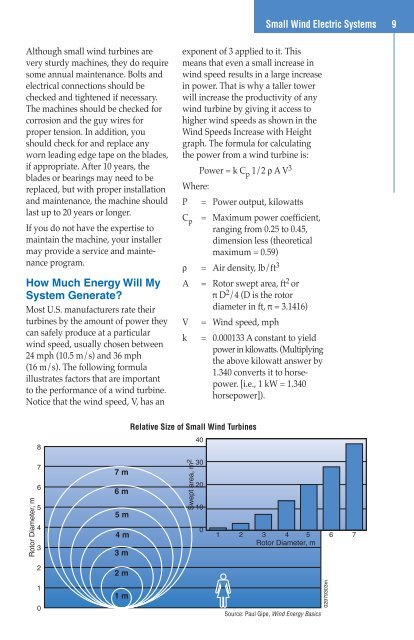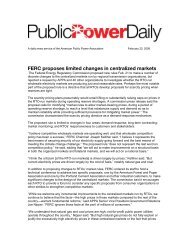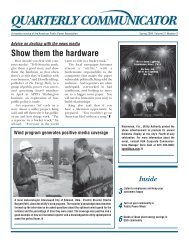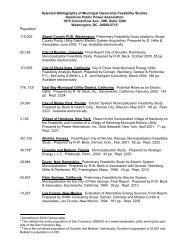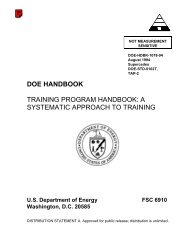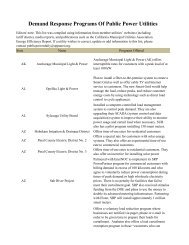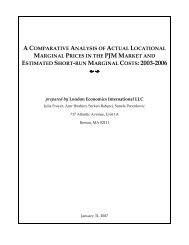Small Wind Electric Systems - American Public Power Association
Small Wind Electric Systems - American Public Power Association
Small Wind Electric Systems - American Public Power Association
Create successful ePaper yourself
Turn your PDF publications into a flip-book with our unique Google optimized e-Paper software.
<strong>Small</strong> <strong>Wind</strong> <strong>Electric</strong> <strong>Systems</strong> 9Although small wind turbines arevery sturdy machines, they do requiresome annual maintenance. Bolts andelectrical connections should bechecked and tightened if necessary.The machines should be checked forcorrosion and the guy wires forproper tension. In addition, youshould check for and replace anyworn leading edge tape on the blades,if appropriate. After 10 years, theblades or bearings may need to bereplaced, but with proper installationand maintenance, the machine shouldlast up to 20 years or longer.If you do not have the expertise tomaintain the machine, your installermay provide a service and maintenanceprogram.How Much Energy Will MySystem Generate?Most U.S. manufacturers rate theirturbines by the amount of power theycan safely produce at a particularwind speed, usually chosen between24 mph (10.5 m/s) and 36 mph(16 m/s). The following formulaillustrates factors that are importantto the performance of a wind turbine.Notice that the wind speed, V, has anexponent of 3 applied to it. Thismeans that even a small increase inwind speed results in a large increasein power. That is why a taller towerwill increase the productivity of anywind turbine by giving it access tohigher wind speeds as shown in the<strong>Wind</strong> Speeds Increase with Heightgraph. The formula for calculatingthe power from a wind turbine is:<strong>Power</strong> = k C p 1/2 ρ AV 3Where:P = <strong>Power</strong> output, kilowattsC p = Maximum power coefficient,ranging from 0.25 to 0.45,dimension less (theoreticalmaximum = 0.59)ρ = Air density, lb/ft 3A = Rotor swept area, ft 2 orπ D 2 /4 (D is the rotordiameter in ft, π = 3.1416)V = <strong>Wind</strong> speed, mphk = 0.000133 A constant to yieldpower in kilowatts. (Multiplyingthe above kilowatt answer by1.340 converts it to horsepower.[i.e., 1 kW = 1.340horsepower]).8Relative Size of <strong>Small</strong> <strong>Wind</strong> Turbines40Rotor Diameter, m765437 m6 m5 m4 m3 mSwept area, m 230201001 2 3 4 5 6 7Rotor Diameter, m22 m101 mSource: Paul Gipe, <strong>Wind</strong> Energy Basics02979303m


